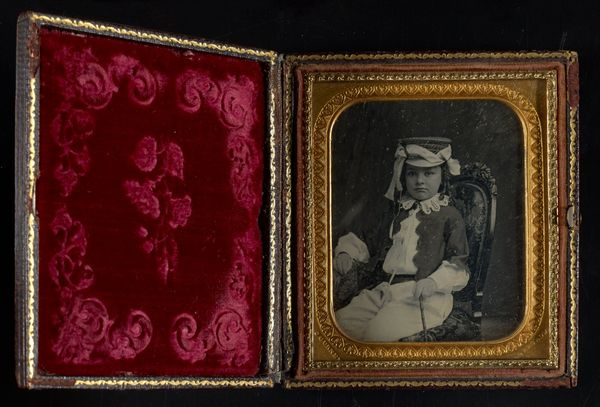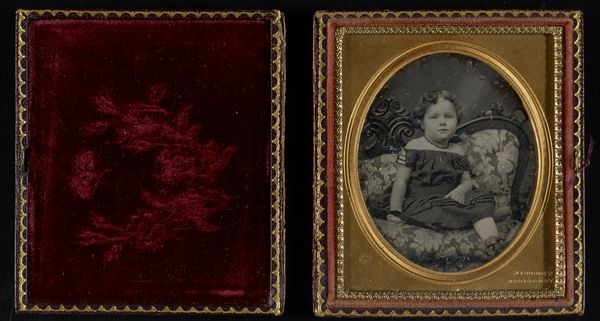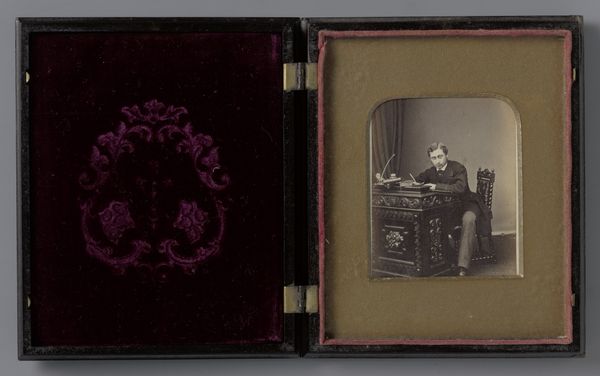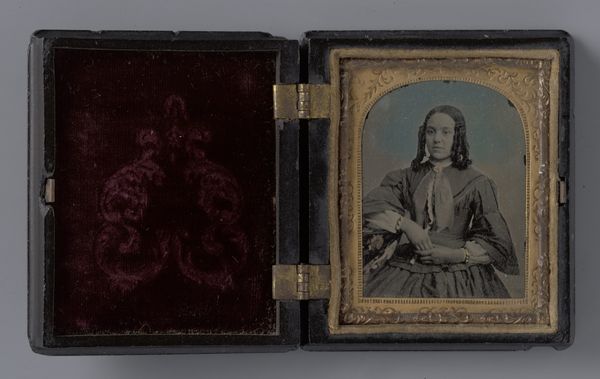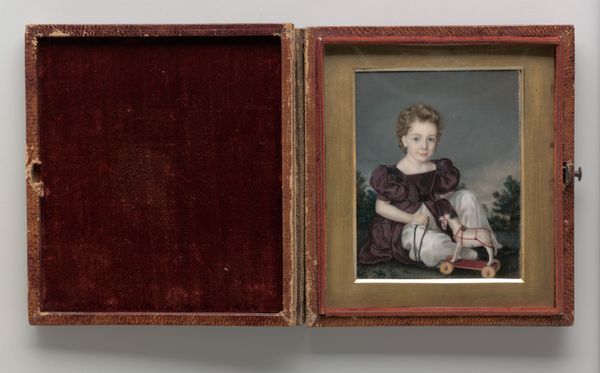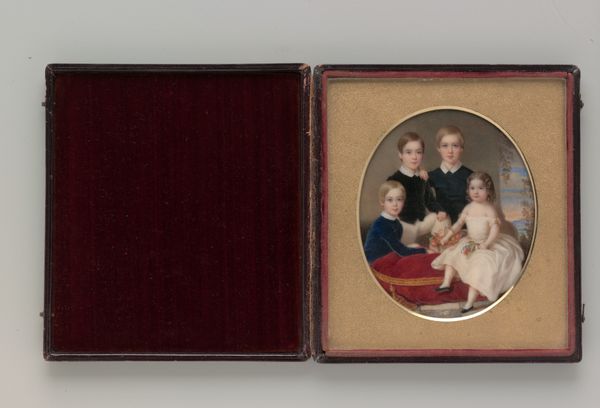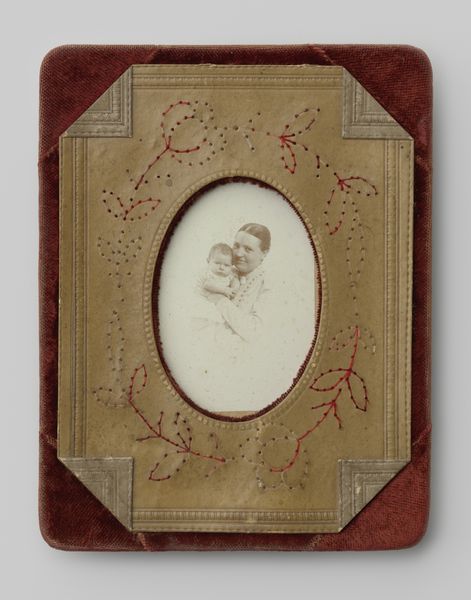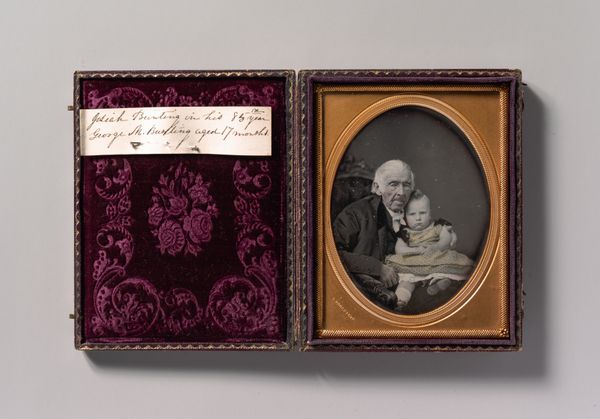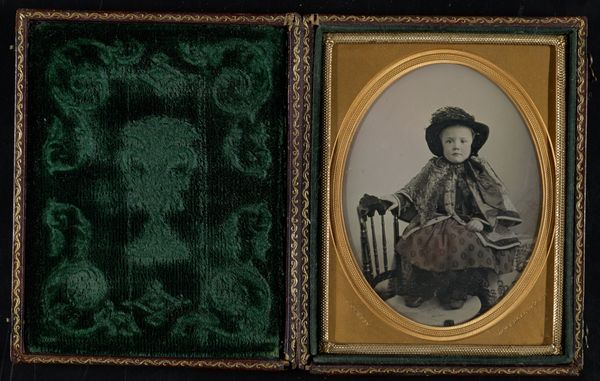
daguerreotype, photography
#
portrait
#
decorative element
#
daguerreotype
#
photography
#
decorative art
Dimensions: Image: 7 x 5.8 cm (2 3/4 x 2 5/16 in.) Plate: 8.3 x 7 cm (3 1/4 x 2 3/4 in.) Case: 2.1 x 9.4 x 8.3 cm (13/16 x 3 11/16 x 3 1/4 in.)
Copyright: Public Domain
Curator: Here we have a daguerreotype from 1855 entitled "Francis Alofsen," created by Brady & Co. Editor: What strikes me immediately is the intimate scale and how this feels so precious. Like a jewel box holding a secret. Curator: Absolutely. Daguerreotypes were revolutionary in how they democratized portraiture. For the growing middle class, having a likeness made was a new possibility, moving away from the exclusive world of painted portraits. Brady & Co. operated a very successful studio, capitalizing on this demand. Editor: And consider the materiality! The silver-plated copper, the velvet lining of the case—these choices signal luxury and permanence. How different from our throwaway digital images! There’s also that fascinating embroidered design inside the lid. All handwork, surely. It makes the photograph itself feel crafted, laboured over, not just mechanically produced. Curator: The presentation is indeed crucial. This was about more than just recording a likeness. It was about creating a lasting, valuable object, embedded with social meaning. Owning something like this reinforced status and solidified family memory in a tangible way. It could be passed down through generations, carrying the legacy of the sitter forward. Editor: I'm wondering about the labor involved, not just in creating the daguerreotype, but in producing these cases, lining them so precisely, applying those tiny decorative elements. We often overlook those contributions when considering the final ‘art’ object, even though the craftsmanship shaped the photograph's cultural value. Curator: Precisely. That labor, and its societal implications, formed a crucial aspect of the image's creation and distribution. And consider how this image participated in constructing notions of childhood and innocence. The sitter is carefully posed. Editor: Looking at "Francis Alofsen" now, I am left considering all the work it took to get an image of this child framed as a family memory. Curator: I concur. The studio did a tremendous service constructing memories with the cooperation of labor, wealth, and status that reminds me of the societal influences.
Comments
No comments
Be the first to comment and join the conversation on the ultimate creative platform.
